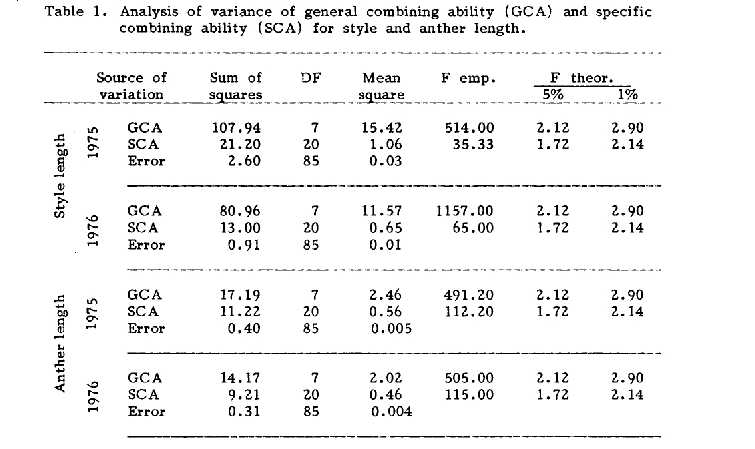Atanassova, B. Combining ability for style
Inheritance of style and anther length in
and anther length in a tomato diallel
tomato F1 crosses is of great importance for
cross.
hybrid seed production based on maternal
lines with exserted stigma because these
characters are the main components determining the manifestation of longistyly in F1 flowers. The
observed fact that short style is associated with shorter pollen tube length does not always guarantee
successful correction of longistyly in F1 (TGC, 1976) imposed a study on the combining ability for
these two components in an 8 x 8 diallel cross including the following parental lines, form and
cultivars: Rutgers-21, GCR-66, Red Cherry, line XXIV-13, Penelopa, line 7/3, L. pimpinellifolium-108
and L. hirsutum f. glabratum. Combining ability was estimated after Griffing (1956) method 2, model II.
Results obtained by the analysis of variance of and SCA for both components (Table 1) show
that general, as well as specific, combining ability has a considerable effect on style and anther
length variation. For both components GCA is much greater, which means that additive gene effects
are greater than non-additive.
Data presented in Table 2 reveal that the choice of parental components can be based on GCA
values. Line 7/3, which best corrects longistyly in F1, has lowest GCA value for style length,
while GCR-66, which has the longest style and for which correction of longistyly in its F1 crosses is
almost impossible, has also the highest GCA values for this character.
Considering anther length, however, SCA should be studied because by data of parental GCA no
prediction can be made of the heterosis effect which in some cases is of great importance for
correcting F1 longistyly.
No navigation control above? Click here!

